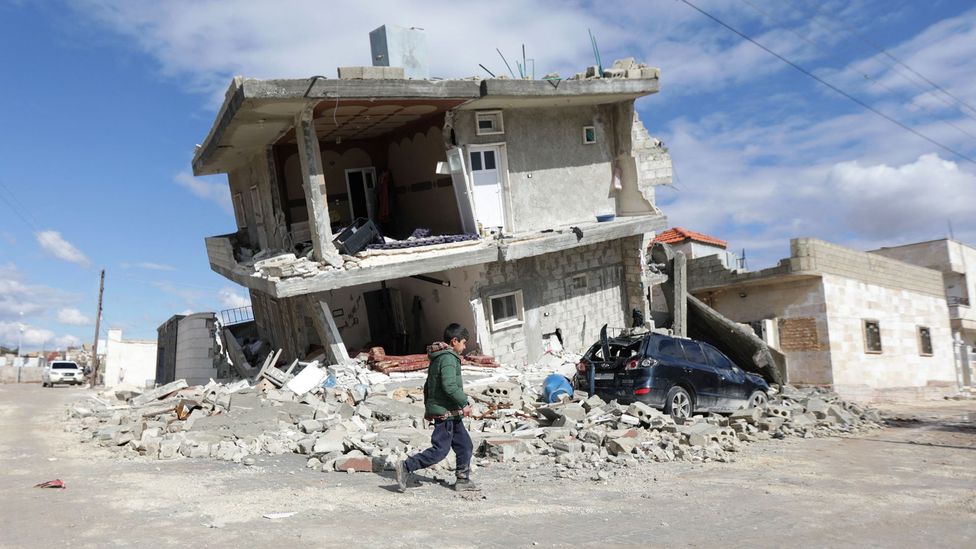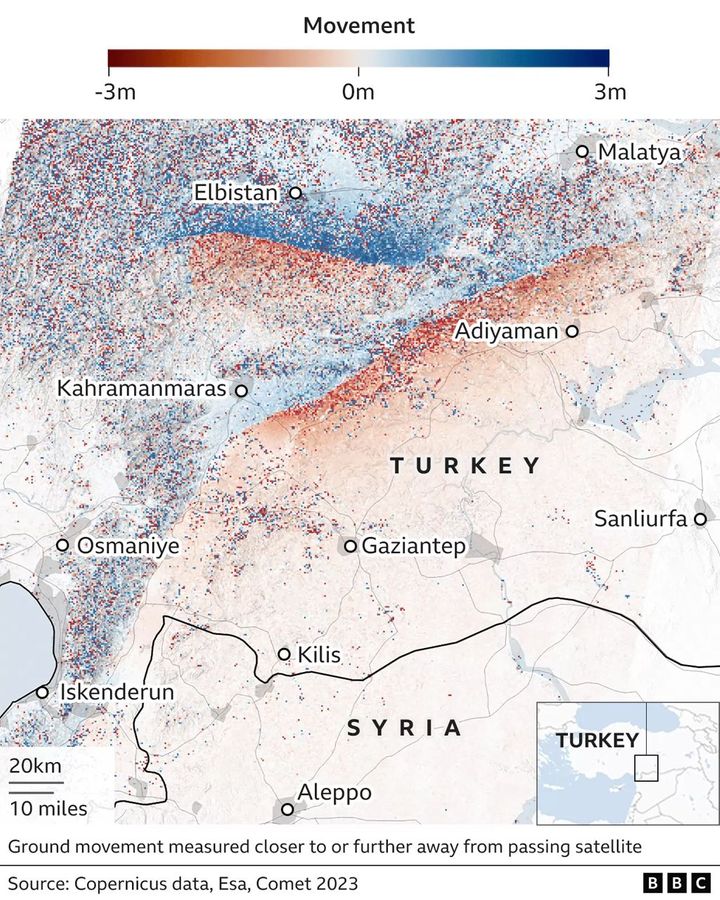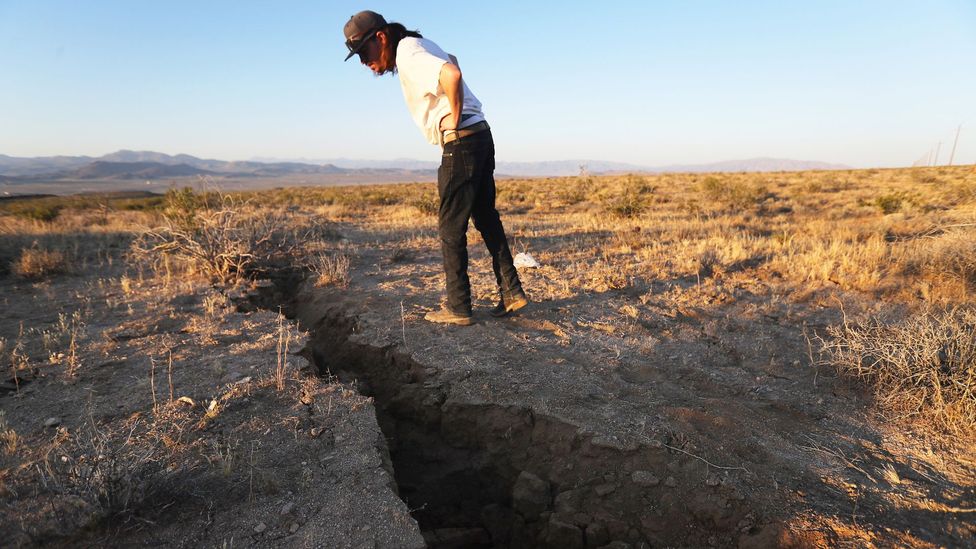Richard Gray

The unfolding tragedy amid the crumpled buildings of south-east Turkey and northern Syria highlights how unexpectedly earthquakes can strike. Scientists are searching for ways to spot the early warning signs of these most unpredictable of natural disasters.
They hit suddenly and without warning. The two devastating earthquakes that struck south-eastern Turkey and northern Syria have claimed thousands of lives and left many more injured or without shelter. Occurring in the early hours of 6 February, most of the victims would have been inside sleeping when the first 7.8 magnitude earthquake brought their homes crashing down on top of them.
The first indication semiologists had that a major disaster was unfolding were the abrupt flashes of activity on their sensitive instruments spread throughout the world as the seismic waves produced by the first earthquake reverberated around the globe. A few hours later this was followed by a second large earthquake of 7.5 magnitude.
The relative shallowness of both quakes meant the intensity of the shaking was particularly severe. And as the area continues to shudder with aftershocks, experts at the United States Geological Survey have warned that those who survived, and the rescue workers now flocking to the region to help, face significant risks from landslides and ground liquefication as a result of the shaking.
But as the world races to provide aid to the shattered communities on either side of the border between Turkey and Syria, some are wondering why we didn't see this coming.
The East Anatolian fault system where the earthquakes occurred is part of a tectonic "triple junction" where three tectonic plates – the Anatolia, Arabia and Africa plates – grind against each other. Since 1970, only three earthquakes of magnitude 6 or larger have hit the region, and many geologists believed the region was "overdue" for a large earthquake.
So, why could they not predict it?

Map of ground movement in Turkey and Syria (Credit: Copernicus data/ESA/Comet 2023/BBC)
In truth, the science of predicting earthquakes is very, very difficult. While there are often minute signals that can be detected in the seismic data after an event has happened, knowing what to look for and using that to make forecasts beforehand is far more challenging.
"When we simulate earthquakes in the laboratory we can see all these little failures happening – there is some cracking and some flaws that appear first," says Chris Marone, a professor of geosciences at Sapienza University of Rome, in Italy, and Penn State University in Pennsylvania, US. "But out in nature there is a lot of uncertainty about why we often don't see foreshocks or indications that there is going to be a big earthquake."
Geologists have been trying to use modern scientific methods to predict earthquakes since at least the 1960s, but with little success. Much of the reason for this, says Marone, is the complexity of the fault systems that criss-cross the globe. There is also a lot of seismic noise – the Earth is constantly grumbling and rumbling away, which, when combined with the anthropogenic clatter of traffic, building work and daily life, makes it hard to pick out clear signals.
Medic greets man rescued days after earthquake
According to the United States Geological Survey, it takes three things to produce a really useful earthquake prediction – the location where it will happen, when it will happen and how big the event will be. So far, they say, no one can do that with any certainty.
Instead geologists produce what are their best guesses in "hazard maps" where they calculate the probability of an earthquake within a timeframe of several years. While these can help with some degree of planning, such as improving building standards in the areas most at risk, it doesn't provide the level of prediction needed to provide early warnings to the public to allow them to evacuate or take shelter. And not everyone who lives in an earthquake zone can afford the kind of infrastructure needed to withstand large amounts of shaking.
"In Turkey and Syria, there were a lot of factors that meant buildings were in a state where they were ready to pancake and fail," says Marone. "In a lot of the Western world there have been seismic reinforcement codes that were implemented in the 1970s and 1980s. But it costs a lot to build and retrofit buildings." (Read about how Japan's skyscrapers are built to survive earthquakes.)
So, scientists have instead been searching for ways to make earthquake predictions more accurate. Alongside seismic signals, researchers have searched for clues in a wide variety of places – from the behaviour of animals to electrical disturbances in the Earth's upper atmosphere.
Recently, however, there has been growing excitement around the capabilities of artificial intelligence to detect the kind of subtle signals that humans miss. Machine-learning algorithms can analyse vast amounts of data from past earthquakes to look for patterns that might be used to predict future events.
"This kind of machine-learning-based prediction has produced a lot of interest," says Marone. He and his colleagues have for the past five years been developing algorithms that are capable of detecting failures in simulated earthquake faults in the laboratory. Using fist-sized blocks of granite, they can recreate the stress build up and friction that might occur at a fault, building up pressure until the fault slips, creating what they call "labquakes".
"Elastic waves travel through the fault as it breaks little by little," says Marone. "We can predict when the failure is going to occur in the laboratory based on these changes in elastic properties and the noise coming from foreshocks in the fault zone itself. We'd love to port this to the Earth, but we are not there yet."
Transferring this predictive power of AI to the larger, complex environment of real-world fault zones is far more challenging.
Scientists in China have been looking for ripples in electrically charged particles in the Earth's ionosphere in the days leading up to earthquakes
"There are a few cases where people have figured out how to do it in post-prediction after an earthquake which suggest this might work," says Marone. "But there's not been a big breakthrough yet."
Scientists in China, for example, have been looking for ripples in electrically charged particles in the Earth's ionosphere in the days leading up to earthquakes caused by changes in the magnetic field above fault zones. One group led by Jing Liu at the Institute of Earthquake Forecasting in Beijing, for example, said it could see disturbances in the atmospheric electrons above the epicentre of the earthquake that hit Baja, California, 10 days before it hit in early April 2010.
Another group based in Israel recently claimed to be able to use machine learning to predict large earthquakes 48 hours beforehand with 83% accuracy by examining the changes in electron content in the ionosphere over the past 20 years.
China is clearly placing its hopes in these clues in the ionosphere. In 2018, China launched the China Seismo-Electromagnetic Satellite (CSES) to monitor for electrical anomalies in the Earth's ionosphere. Last year, scientists at China's Earthquake Network's Centre in Beijing, claimed to have found drops in the density of electrons in the ionosphere up to 15 days before earthquakes that hit the Chinese mainland in May 2021 and January 2022.
"An energy transfer can occur between the lithosphere and the two layers above – that is the atmophsere and the ionosphere," says Mei Li, one of the researchers working at the China Earthquake Network Centre. But she says the mechanism for how this occurs is still controversial. And she warns that even with the satellite data, their findings are still a long way from being able to predict an impending earthquake.
"We cannot specify the right location where a forthcoming event will happen," say the researchers, in a paper about their findings. Li also points to another complication – large earthquakes can induce changes in the ionosphere far away from their epicentre, which makes confirming the precise location difficult.
"The ionospheric anomaly can appear around the epicentre of an earthquake as well as its magnetically conjugated point in the other hemisphere, which gives us more difficulty to confirm the location of the forthcoming event," she says.

The earthquakes that struck Ridgecrest, California, in 2019, provided scientists with invaluable data about large shocks that follow one another (Credit: Mario Tama/Getty Images)
ANIMAL PREDICTION
Reports of animals being spooked and fleeing in panic before earthquakes date back millennia, but using these observations in a meaningful way is difficult.
Animals' behaviour doesn't always allow accurate prediction. There are reports of one earthquake being predicted in China several decades ago with the help of unusual animal behaviour, but the feat has never been repeated.
Scientists at the Max Planck Institute of Animal Behaviour in Germany, however, are logging the behaviour of cows, sheep and dogs in earthquake-prone areas of Italy. Animals altered their behaviour earlier the closer they were to the epicentre of impending tremors and earthquakes, the researchers say. (Read more about the animals that predict disasters.)
Other researchers are pinning their hopes on different signals. In Japan, some claim to be able to use changes in water vapour above earthquake zones to make predictions. Tests suggest these predictions have 70% accuracy, although they can only say an earthquake might happen at some point in the next month. Others have been trying to use minute ripples in the Earth's gravity that can occur before a quake.
But despite all these claims, none have been able to successfully predict where and when an earthquake will occur before it happens.
"We just don't have the infrastructure to do the kind of monitoring we would need," says Morone. "Who is going to put up $100m (£83m) to install a set of seismometers of the sort we use in the lab to monitor a fault? We know how to predict laboratory quakes, but what we don't know is if they really transfer to the complexity of real-world faults. The East Anatolian fault, for example, is in a complex region of the world – not one simple fault plane but a bunch of things coming together."
And even with the ability to make better forecasts, there is still the question of what to do with the information. Until the accuracy improves, evacuating entire cities or asking people to stay out of at-risk buildings could be costly if mistakes are made. But Marone looks to the world of meteorological forecasting for some indication of what might happen if the data improves.
"They already predict big weather events with some accuracy in advance," says Marone. This allows government agencies to prepare emergency responses to events such as hurricanes and issue warnings to members of the public that can help keep them safe. Being able to do something similar for earthquakes is still years away, says Marone. "We are not anywhere near that at the moment."

Many of those trapped in the rubble in Turkey and Syria had been in bed when the first earthquake struck (Credit: Bulent Kilic/AFP/Getty Images)
One area where artificial intelligence may have a more immediate role to play is in the events that happen immediately after an earthquake. Researchers at Tohoku University and Renmin University of China have been developing tools that use AI to classify the damage caused by natural disasters from satellite imagery so governments and rescue teams can be sent to where they are most needed. It uses algorithms to assess building damage and identify the structures which have been totally destroyed or are potentially dangerous.
There are also hopes that machine-learning algorithms might help keep rescue workers and survivors of earthquakes safe by helping to better predict aftershocks that follow a major earthquake. These can pose an enormous risk by shifting buildings left unstable by the initial earthquake, causing further destruction.
Researchers at Harvard University, for example, have been deploying deep learning – a form of machine learning – to study patterns of aftershocks in the hope they can be predicted.
"We have a very good understanding of what happens after a big event and why aftershocks occur," says Marone. "But it's still not complete. We have got better at knowing as a scientific society if smaller shocks might be leading up to an even bigger one, but there is always uncertainty.
"You don't need to know very much about earthquakes and aftershocks to realise what happened in Turkey is a very unusual situation where you had two really big earthquakes close to one another. The second one was triggered by the first one, but these were two big main shocks."
No comments:
Post a Comment